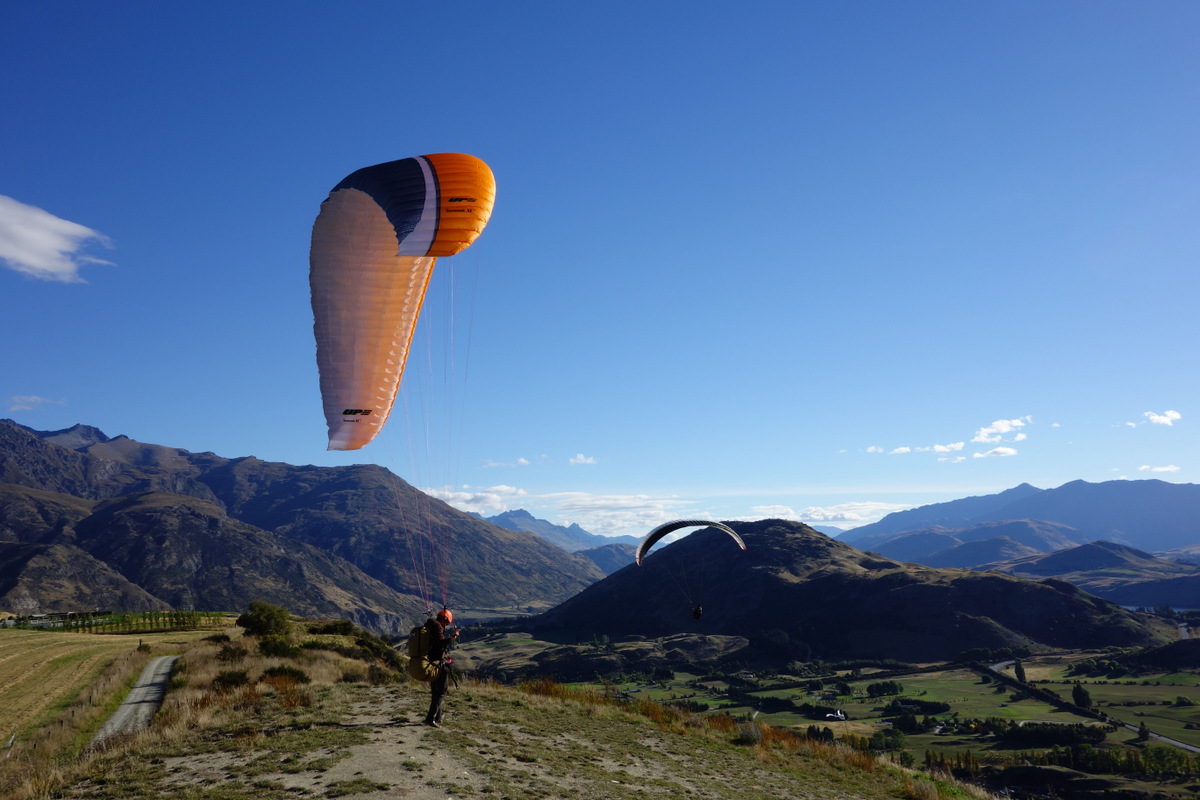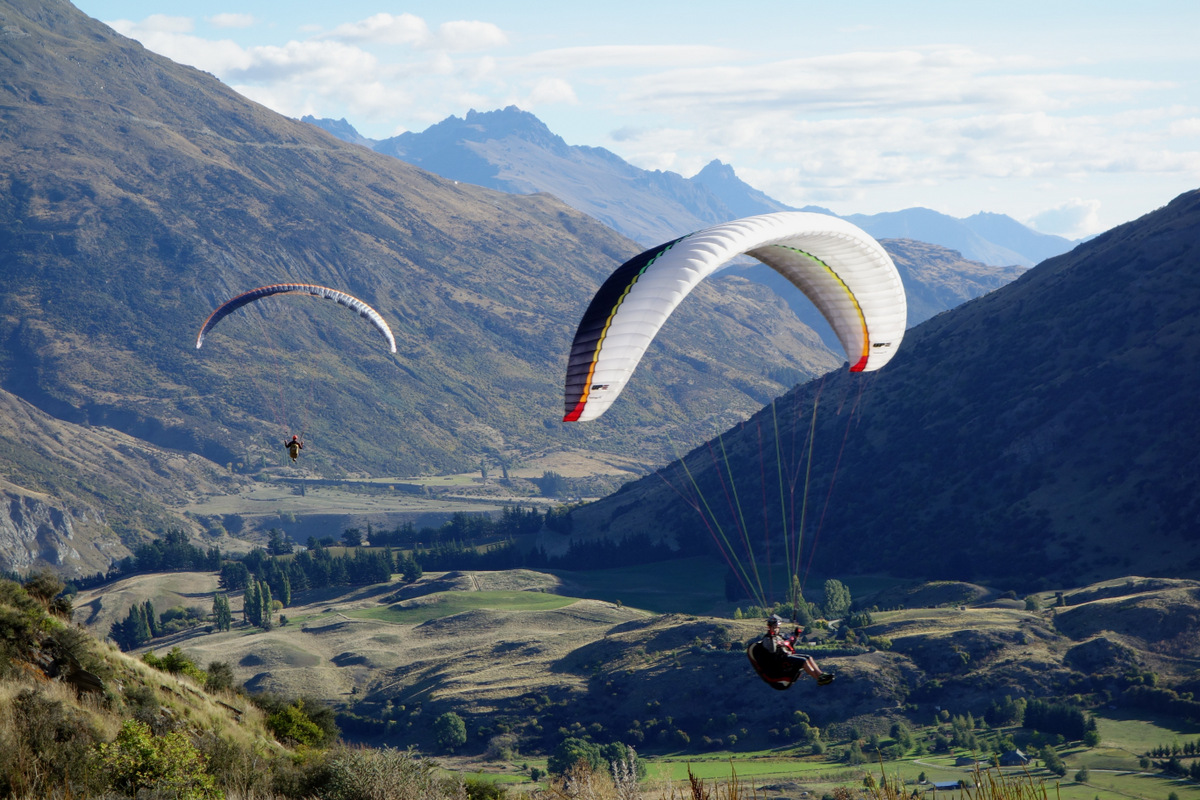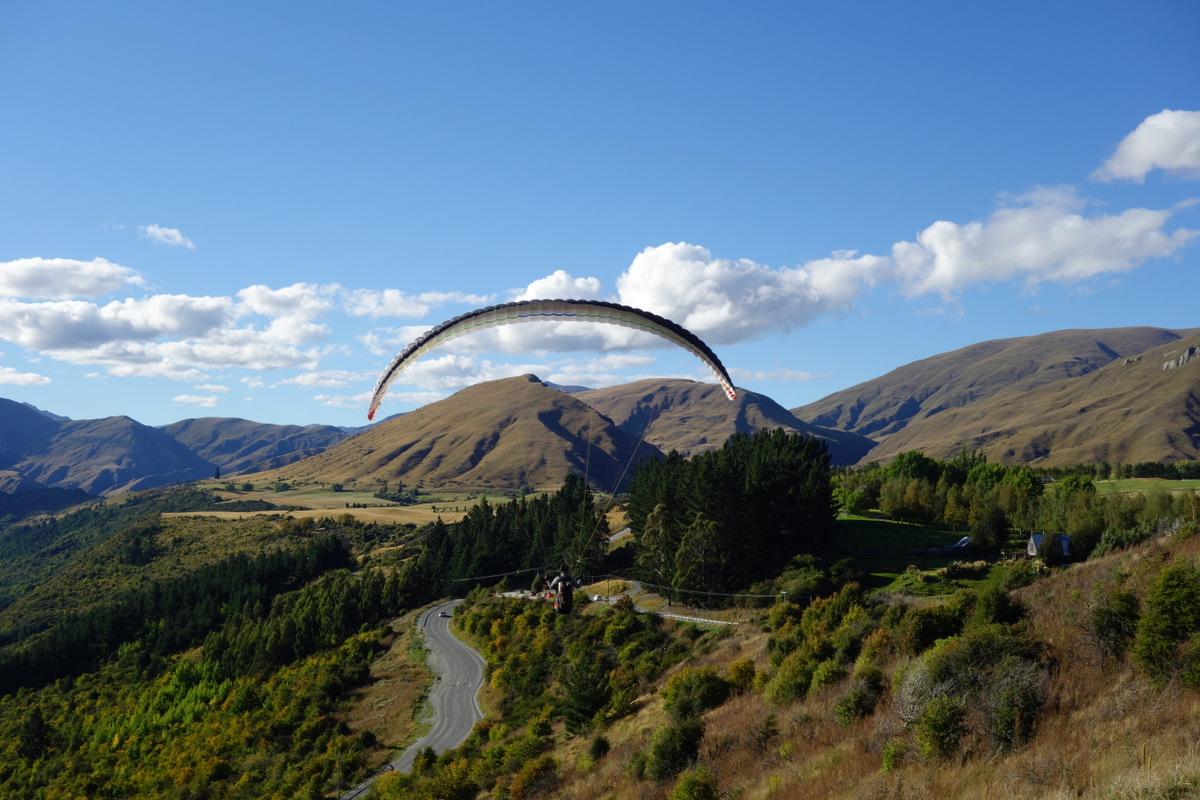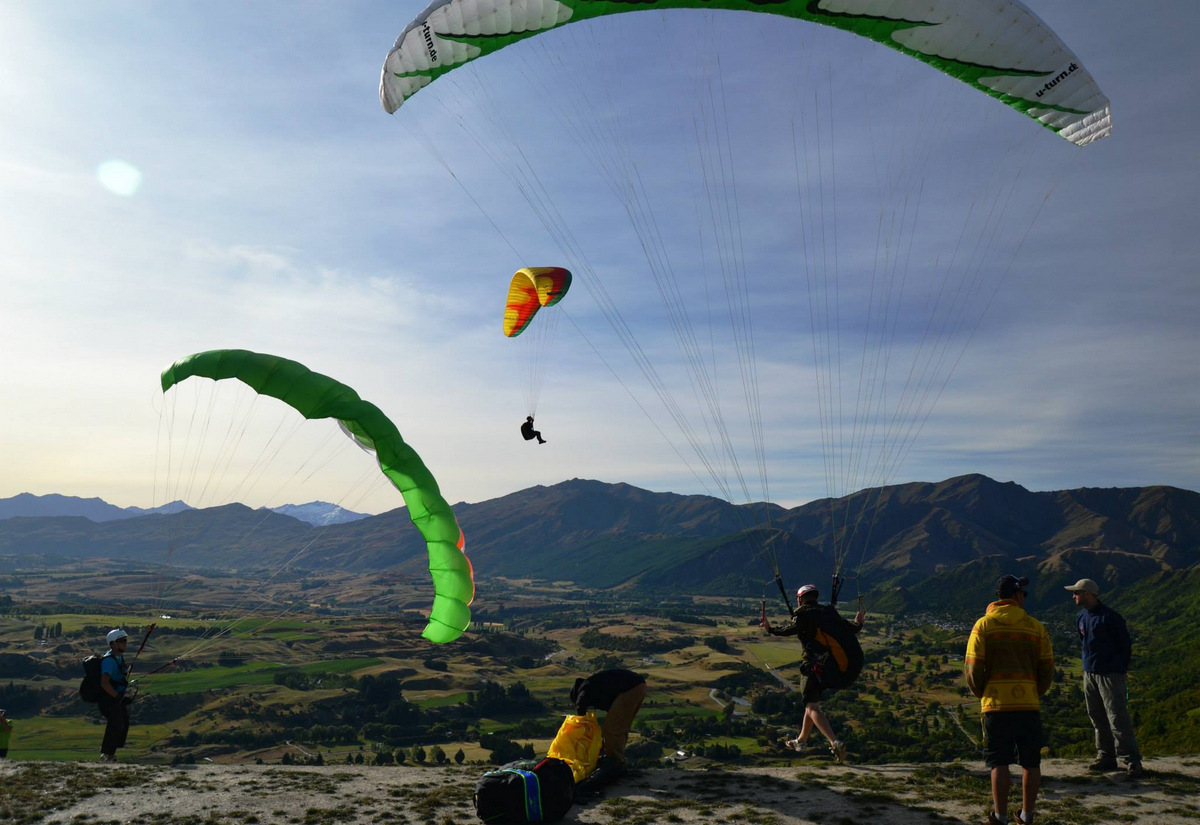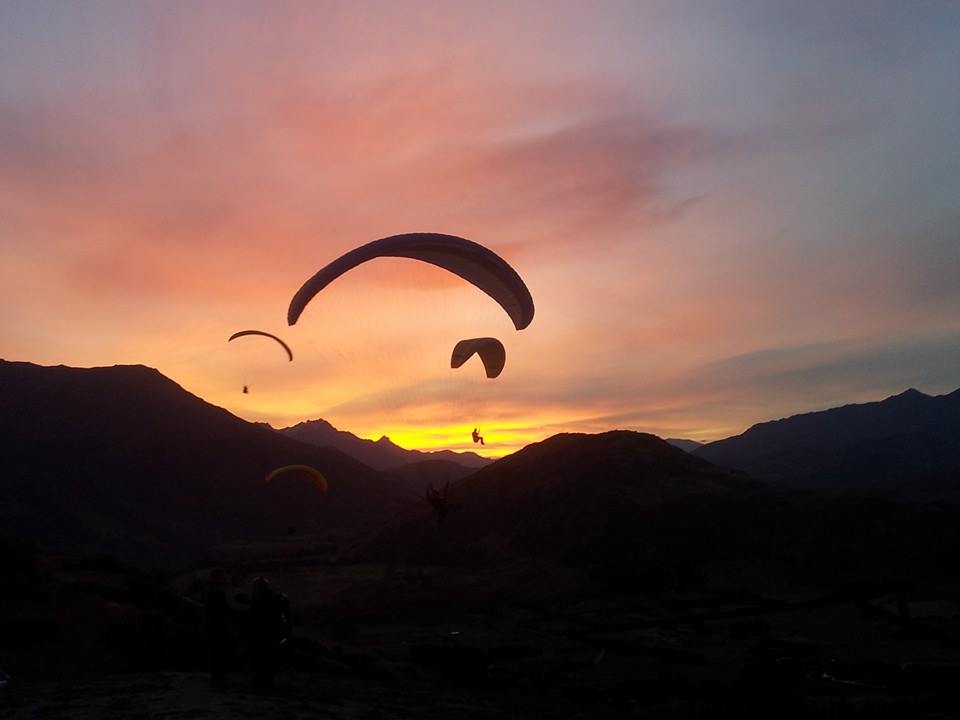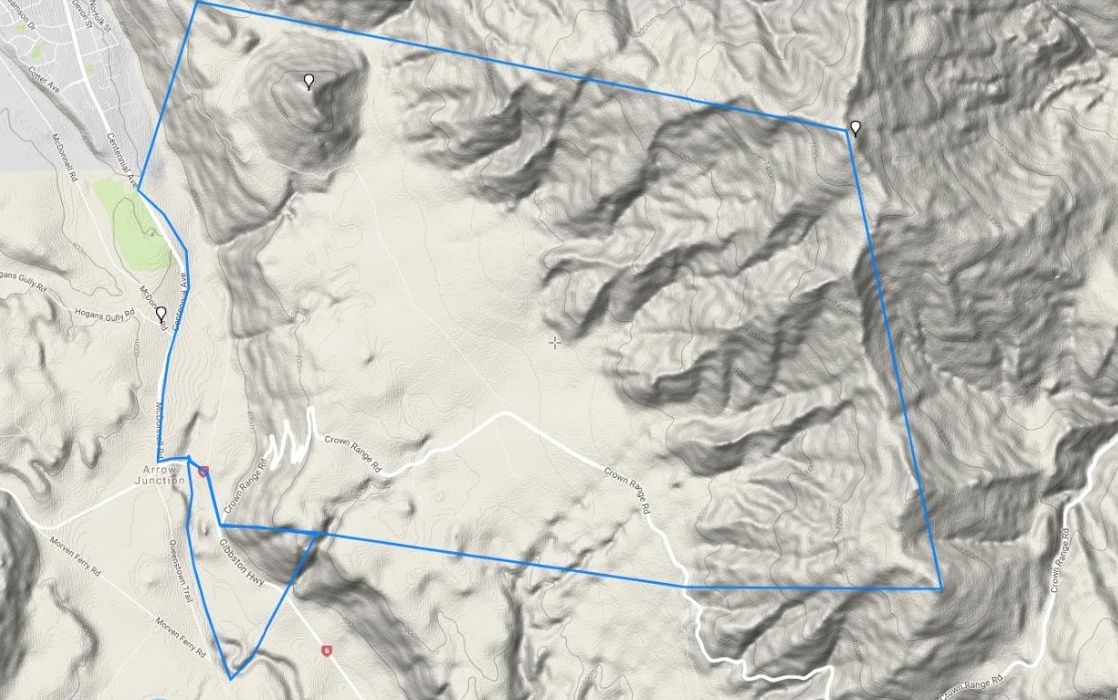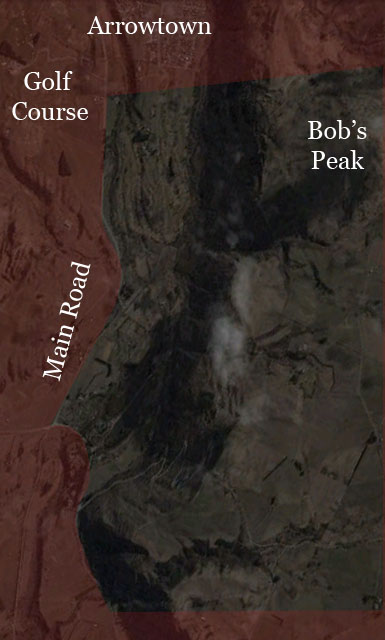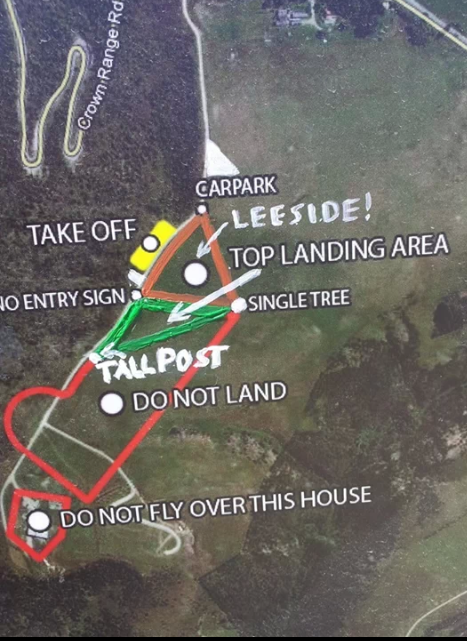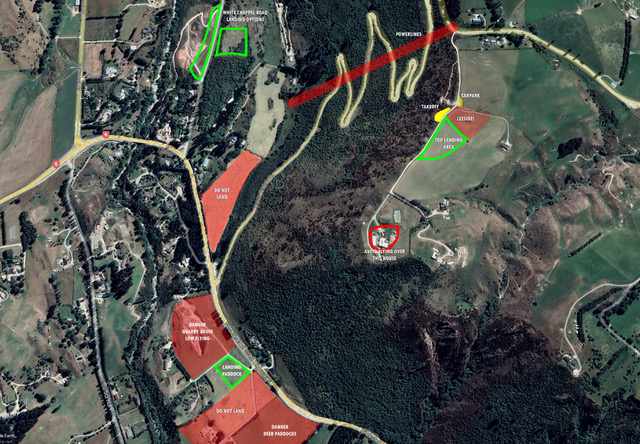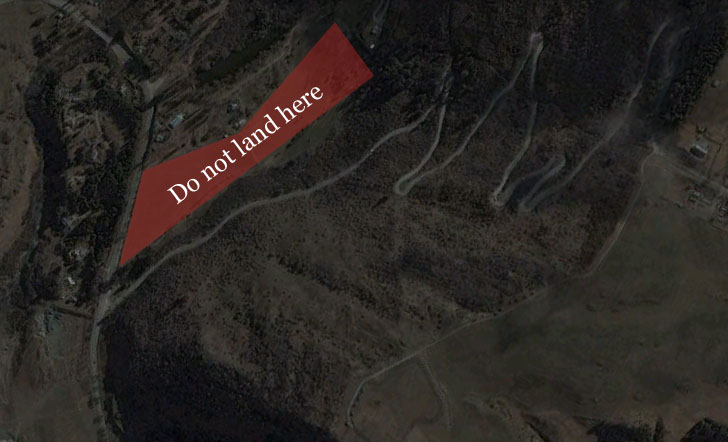CROWN TERRACE
The Crown Terrace is a North West facing and best known for its excellent ridge soaring, in the right conditions of course! It can also be a very good thermalling site, up to the 3000ft AMSL ceiling and within the small GAA G753.
The landing field is out across the road and left of takeoff. GAA758 with a max altitude of 2100ft has been established to enable pilots to access that landing field. Note that the launch height is also at 2100 ft this means that you must be below takeoff height before crossing state highway 6 toward the landing. The main flight path for civil aircraft landing to the west in Queenstown is very close to the south.
ACCESS
Drive east from Queenstown along SH6 as if driving to Wanaka via the Crown Range. The Crown Range turnoff is 18km from Queenstown. Climb steeply up through the zig-zags to the top of the ridge. Just east of the popular lookout is a small track going off to the right through a gate.
 Airspace
Airspace
The airspace confines are defined by G753 / G758. The main altitude limit is 3,000ft AMSL, which is the height of the top of Mount Beetham (the small cone shaped dimple to the north of launch).One can fly out in front as far as the main road leading to Arrowtown.
The northern boundary is towards Arrowtown and is where the far end of the golf course meets the houses on the outskirts of Arrowtown. There is also a tall lone pine tree on the terrace just SW of Mount Beetham which is a good boundary marker.
Do not fly over or cross State Highway 6 unless to land. The surrounding area outside this GAA is the Queenstown Control Zone (CTR). DO NOT fly outside this GAA boundary.
 Weather
Weather
The weather at the Terrace can be unpredictable. Many a pilot has been caught by surprise. It can become gusty and strong quite suddenly, resulting in very little forward speed and on occasions, pilots getting blown backwards! Be mindful of the weather forecast before flying here and look for tell tale signs of a strong wind on Lake Hayes and on the trees in the distance.
Ensure you are briefed from an experienced local pilot prior to flying. This terrace is not known as ‘Crown Terrors’ or the ‘Terrace Monster’ for nothing!
If flying at Coronet Peak has blown out in the strong NW, by the time you get to the Terrace it will be either there already or very close by.
However, when it’s ‘on’, it’s a lovely place to fly.
There is now an excellent weather station installed close to the take off which provides up to the minute weather information.
 Take off
Take off
There are two ways to set up for take offs. There is an upper launch, wide enough for two gliders laid out side by side and a single lower launch, one above the other, for when it’s strong.
Please read and take note of all the signage at this launch site upon arrival.
Most importantly, DO NOT block the access road or drive along the private access road past the take offs. Use the designated parking area. Do not fly over any residential properties adjacent to the launch site and always be polite and courteous to nearby landowners that you may encounter. If the top landing field is in crop, keep crop damage to an absolute minimum.
Do not smoke at this site due to fire risk. Take all rubbish away with you.
 Landing
Landing
TOP LANDING
Top Landing is the preferred landing option. It is possible to land on the launch platform itself or within the marked green ‘triangle’ behind the fence as shown on the map below. Top landing on the launch is often the best option providing it is clear and safe to do so. It can be the safer of the two options as it is not affected by turbulence that can be encountered behind in the ‘triangle’.
A slope landing in front of take-off is also possible. If you must land behind in the ‘triangle’ be mindful of stock and crops. Do not disturb or damage. If you cannot land, do not take-off!
BOTTOM LANDINGS
If you are too low or unable to land on the top, landing options are available at the base of the hill. They are both very sensitive. Always make sure you have the height to get to the designated bottom landing fields. There are two designated landing areas The local landowners have become a bit fed-up with us over the years due to inconsiderate flying activities. The Terraces is a threatened site due to this.
There is public land along Whitechapel Road (out and to the right of launch) where we may land. The area to the east of Whitechapel Road is slightly elevated but uncultivated. It is quite wide-open but the terrain is not even. Landing by Whitechapel Road itself might be the preferred option but can get turbulent if windy in the valley.
Secondly, there is a field out, around the corner to the SW of launch (not visible from launch), near the highway. It is important that this is the only field we land in. Identify it from the map before flying. There is a Quarry, which is easily identified from the sky, near and across the road from the Crown Range intersection. It is to be strictly avoided! Do not overfly or land here due to explosives and heavy machinery being used at this site. Also, further to the east, there are deer paddocks with prized stags, these must be avoided.
The only authorised landing field is the one next to, but just SE of, the Quarry fields, inside the farm gate that ‘splits’ to the left and right. The landing field is immediately in the driveway to the right (NW) but left of the driveway. It is not the narrow field exactly adjacent to the road. There is a gate to the correct field right by that entrance to the farms. Do not drive into the driveway. Park your vehicle by the road. Do not obscure the farmers’ signage ( e.g. peonies). Better still: park up by the Crown Road turnoff and walk the 200m! Other fields around the landing may be larger, and have been used in the past, but they are strictly no longer available. Nearby fields may also contain deer and other stock which must be avoided. Do not fly close to, or overfly, houses. It is not a large field but there is plenty of room. Farm machinery may be parked there at times.
Land, pack up, and get off the property!
HAZARD’S
• There is a set of power lines running from near the entrance to the site driveway access down to the base of the hill. Watch for them.
Always abide by the NZHGPA ‘Country Code’ guidelines.


